Aulonocara stuartgranti
Grant's Peacock
Etymology
Aulonocara: from the Ancient Greek αὐλός (aulós), meaning ‘flute’, and κάρα (kára), meaning ‘head, face’, in reference to the greatly enlarged sensory canal system in the skull of genus members.
stuartgranti: named in honour of legendary aquarium fish exporter Stuart M. Grant (1937-2007).
Classification
Order: Perciformes Family: Cichlidae
Distribution
Endemic to Lake Malawi, where it is widely-distributed along both east and west coastlines.
Populations include Ngara (often referred to as ‘flametail’), Mdoka, Chilumba, Maulana (also known as ‘bi-colour 500’), Chirwa Island, Chitimba Bay, Charo, Mbowe Island, Usisya, Mundola Point, Ndumbi,? Hai Reef, Hongi Island,? Mbamba Bay, Wikihi, Cobue, Ntumba, Metangula, Chiloelo, Gome, Ntekete and Thumbi West Island. There are also a number of populations which may or may not prove conspecific, some of which have been described as distinct species (see ‘Notes’).
Type locality is ‘Mpanga Rocks, Chilumba, Lake Malawi [Lake Nyasa], Malawi’.
Habitat
Inhabits the so-called intermediate zones, where rocky shores give way to open expanses of sand with scattered rocks.
Maximum Standard Length
120 – 130 mm.
Aquarium SizeTop ↑
Minimum base dimensions of 120 ∗ 45 cm or equivalent are recommended unless keeping the fish in smaller aquaria for breeding pruposes.
Maintenance
Arrange some piles of rockwork around the aquarium, but leave some open spaces between them and use fine sand as substrate so that the fish are able to feed in a natural way (see ‘Diet’). Coarser options such as gravel or small pebbles can inhibit feeding, damage gill filaments and even be ingested with the potential of internal damage/blockages. This species does not tend to harm plants.
Water quality is of the utmost importance since these cichlids are extremely susceptible to deteriorating water quality/swings in chemical parameters, and should never be introduced to a biologically immature aquarium. The best way to achieve the desired stability is to filter the aquarium heavily, using a combination of canister filters and/or a sump system, and perform minimum weekly water changes of 30-50%.
Water Conditions
Temperature: 23 – 29 °C
pH: 7.5 – 9.0
Hardness: 179 – 447 ppm
Diet
Aulonocara spp. are benthophagous by nature, employing a method of feeding whereby mouthfuls of substrate are taken and sifted for edible items with the remaining material expelled via the gills and mouth. They are equally-skilled at hunting as grazing, tending to hover above the substrate until tiny movements are detected, and possess enlarged sensory pores on the head which assist in this technique.
The captive diet should contain a variety of high quality, fine-grade prepared foods plus small live and/or frozen chironomid larvae (bloodworm), Tubifex, Artemia, mosquito larvae, etc. At least some of the dried products should contain a high proportion of vegetable matter, such as Spirulina.
Home-made, gelatine-bound recipes containing a mixture of dried fish food, puréed shellfish, fresh fruit and vegetables, for example, can also work well and may be cut into bite-sized discs using the end of a sharp pipette or small knife. Rather than a single large meal offer 3-4 smaller portions daily to allow natural browsing behaviour, since this seems to result in the best growth rate and condition.
Behaviour and CompatibilityTop ↑
A relatively peaceful species, although males tend to act aggressively towards any fish with a similar colour pattern, so take care when selecting tankmates. Other Aulonocara species are best avoided since most are able to hybridise, while the majority of Mbuna are excessively boisterous and thus unsuitable.
Males are territorial, therefore it is best to maintain just a single individual alongside 4-6 females unless the aquarium is very large.
Sexual Dimorphism
Males are larger and more colourful than females.
Reproduction
Maternal mouthbrooder which will often spawn in a community set-up, but should be moved or maintained in a specific tank if the intention is to maximise the number of fry. Males can be aggressive in pursuit of females, so a ratio of a single male to 4 or more females is normally recommended in order to reduce the attention on any particular individual. Some flattish rocks and open areas of sand should be included to act as potential spawning sites.
The male will select one such site and begin his courtship display. When a female is willing she will approach and lay a batch of eggs, after which she immediately picks them up in her mouth. The male possesses a number of ‘egg spots’ on the anal fin and the female is also attracted to these, but when she tries to add them to? her mouth she actually recieves milt from the male, thus fertilising the eggs.
The female will carry brood for up to 4 weeks before releasing free-swimming fry. She will normally refuse food during this period, and can be easily spotted by her distended mouthparts combined with a distinctive ‘chewing’ motion. If a holding individual is overly stressed the eggs may be eaten or rejected, meaning care must be taken if you decide to isolate a brooding female. It is also worth noting that if a female is away from the colony for too long she may lose her position in the pecking order of the group, so try to wait as long as possible before attempting such an operation unless she is being actively harassed. Some breeders prefer to artificially strip the fry from the female’s mouth at the 2 week stage and raise them separately from that point.
The fry may still have some yolk sac remaining when released and do not require additional food until this has disappeared. If released with yolk sacs fully-absorbed, Artemia nauplii or similar can be offered immediately. They usually start to become sexable at around the 4 month stage.
NotesTop ↑
Males of this species occur in a wide range of colour forms depending on locality, with blue variants being found predominantly (but not exclusively) towards the north of the lake and yellow in the south. This variation, alongside its relatively extensive distribution, has resulted in some taxonomy issues, several of which have not yet been resolved.
For example, two forms from the southwest of the lake are referred to as A. sp. “stuartgranti maleri” and A. sp. “stuartgranti mbenji”, respectively, and may turn out to be distinct species since they possess distinctive colour patterns and are geographically isolated from other populations. In addition, the described species A. baenschi, A. korneliae, and A. hueseri were all previously considered to be forms of A. stuartgranti, while some authors believe that the currently valid A. hansbaenschi and A. steveni should be placed into synonymy with it. The population from Chitimba Bay is also traded under the fictitious name ‘A. masoni‘, with other vernacular/trade names for the species in general including ‘flavescent peacock’, Aulonocara sp. ‘blue neon’ and A. sp. ‘Tanzania yellow’.
References
- Baensch, H. A. and R. Riehl, 1985 - Mergus Verlag für Natur- und Heimtierkunde, Melle v. 2: 1-1212
Mergus Aquarien Atlas. Seltene Fische und Pflanzen (1st ed.) - Konings, A., 1995 - Cichlids Yearbook 5: 26-36
A review of the sand-dwelling species of the genus Aulonocara, with the description of three new species. - Konings, A., 2007 - Cichlid Press: 1-424
Malawi Cichlids in their Natural Habitat, New 4th Edition

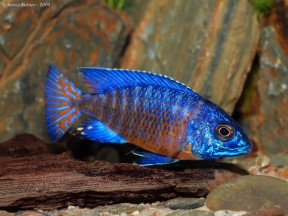
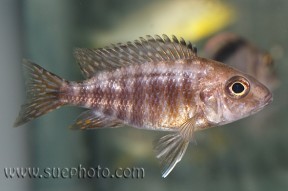
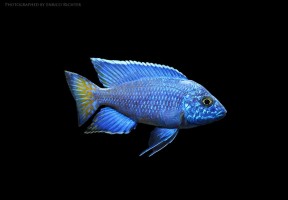
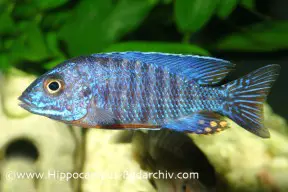
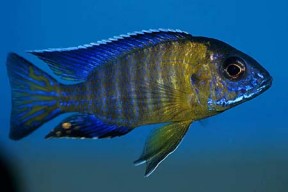
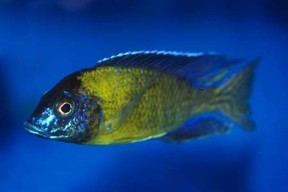
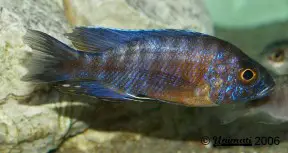
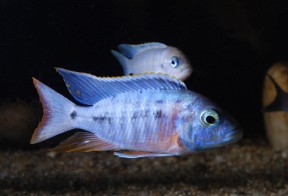
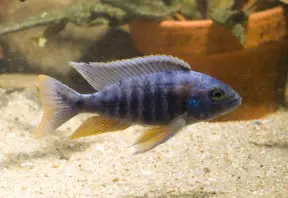
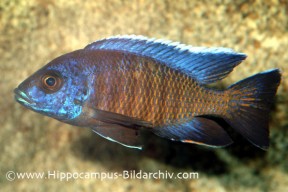

May 17th, 2015 at 7:55 am
One of the images is giving an error in the popup, I believe it is an image from JJPhoto.
May 19th, 2015 at 7:53 pm
Thanks for flagging this up. 🙂 I’ve fixed the image issue, plus added some new pics and etymology to the profile.